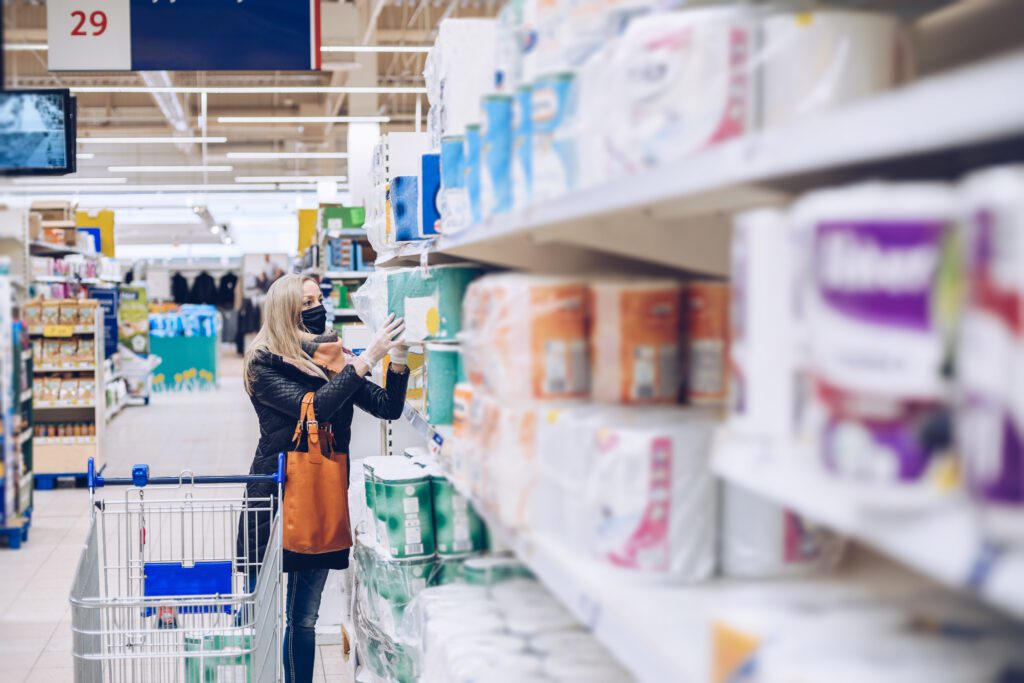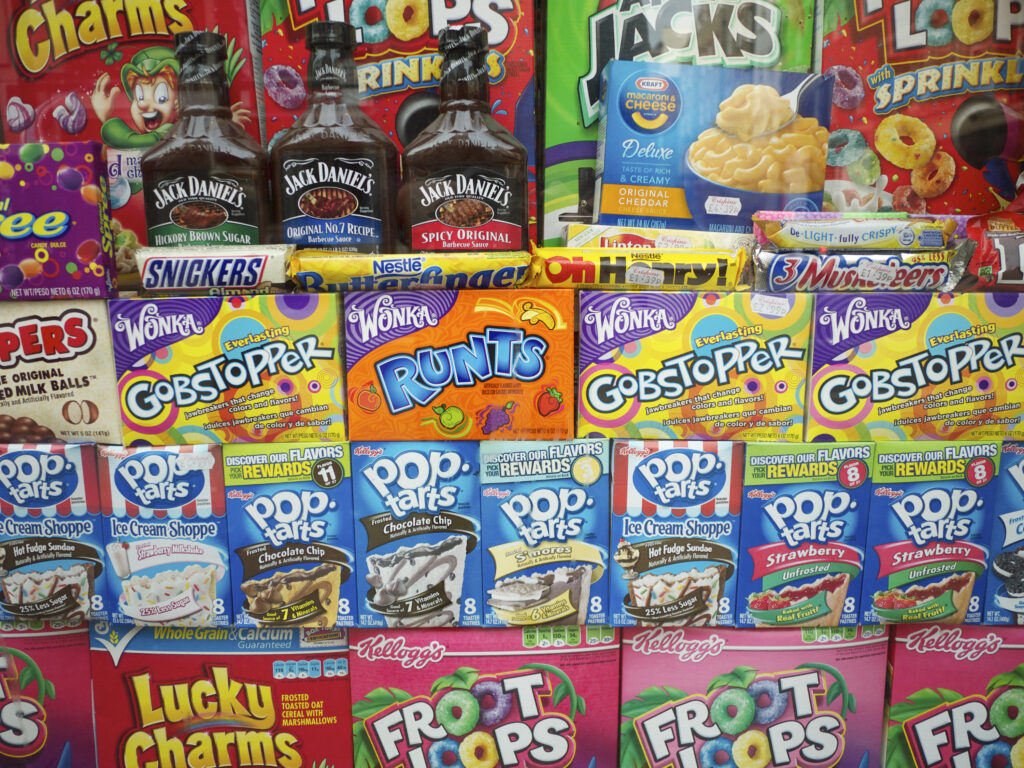
Shrinkflation: The Hidden Costs of Inflation
Inflation is impossible to ignore in 2022. We’ve all seen it in the grocery store, at the gas station and on our electricity bills. But there is additional inflation that companies don’t want us to see, that’s called shrinkflation.
What is Shrinkflation?
Shrinkflation, also known as package downsizing, refers to the act of shrinking product size or net weight while maintaining the same sticker price to offset the impacts of inflation.
While prices look the same, the general price level of consumer goods has actually increased per unit of weight or volume.
Food and beverage industries are the most likely to utilize shrinkflation during periods of high inflation. This can look like fewer sheets on a toilet paper roll, thinner cereal boxes or new shapes of products to conceal the size reduction.
The Associated Press called shrinkflation “the inflation you’re not supposed to see.” Consumers are less likely to notice a higher unit price in a smaller package compared to a higher sticker price on the final product.
Inflation in 2022
The current rate of inflation in the US means the prices of consumer goods have been increasing at the steepest rate in over 40 years, according to data from the Bureau of Labor Statistics.
The BLS report stated that while overall inflation is up 7.7% annually in October 2022, consumer food prices have jumped 10.9%. Food staples such as coffee, eggs and margarine are among some of the most impacted foods, with egg prices up almost 40% year-over-year.
How Does Shrinkflation Work?
During periods of high inflation the price of producing consumer goods increases because the price of raw materials, labor, manufacturing and transportation have all risen. To appease shareholders and maintain a strong profit margin, companies can either raise prices or cut costs.
Economic research has shown that consumers are more likely to notice an explicit price increase and less likely to notice a product shrinkage, as consumers don’t often keep track of net weights and volumes.
So to raise prices, companies can either raise the sticker price or raise the price per unit and reduce the unit size to maintain the sticker price. This way, the cost of inflation is somewhat hidden from consumers.
Shrinkflation vs. Skimpflation
In October 2021, NPR’s Planet Money podcast discussed “skimpflation,” which refers to a downgrade in the quality of products or services while maintaining the same price.
Essentially, shrinkflation is the shrinking of products and skimpflation is the skimping on quality of products while keeping the sticker price the same.
For example, a company selling candy bars could implement either shrinkflation or skimpflation:
- Shrinkflation: Smaller package sizes, less net weight in each candy bar.
- Skimpflation: Reformulating the candy bars to be made with cheaper ingredients.

The History of Shrinkflation
The term “shrinkflation” was first popularized by economist Pippa Malmgren in her book “Signals: How Everyday Signs Can Help Us Navigate the World’s Turbulent Economy.”
While the terminology is relatively recent, the phenomenon has existed for as long as economies have existed. It tends to pick up speed and become easier to notice during periods of high inflation.
Edgar Dworsky, a longtime consumer advocate and lawyer, has recorded shrinkflation on his website Consumer World since 1995. Because of this work, he has become a go-to expert on the topic.
Can Shrinkflation Impact Inflation Metrics?
The most common inflation measures are the consumer price index (CPI) and producer price index (PPI). These measurements do not account for the size of each unit, instead measuring the general price level for a basket of goods.
This means the most used inflation metrics don’t account for shrinkflation, which means that large-scale shrinking can potentially go unnoticed.
Common Risks of Shrinkflation
While retailers may view shrinkflation as the safest way to maintain profit margins without rising prices, this strategy can backfire if customers catch on.
Because companies view this strategy as a stealthy and hidden way to raise prices, consumers who spot it can feel tricked. This can have a damaging impact on consumer sentiment towards the company, leading to a loss of trust and potentially even sales.
In 2022, consumers are very aware of shrinkflation.
Tiktok users have gone viral showing their own examples of shrinkflation — from skinnier cereal boxes to smaller ice cream cartons. In the last few months, other social media sites have been flooded with individuals sharing their photos.

Examples of Shrinkflation in 2022
- A few months ago, a box of Kleenex had 65 tissues. Today, each box comes with only 60 tissues.
- Cottonelle Ultra Clean Care toilet paper rolls have shrunk from 340 sheets per roll to 312.
- Gatorade bottle shrinkage has brought 32-ounce bottles down to 28 ounces.
- Procter & Gamble Co. has downsized numerous shampoo and conditioner products, dropping their size from 12 fluid ounces to 10.4 fluid ounces.
- Cadbury, owned by Mondelez, has announced plans to shrink the size of multipack chocolate bars.
- Doritos bags have shrunk from 9.75 ounces to 9.25 ounces.
- General Mills shrunk “family size” boxes by nearly 10% from 19.3 ounces to 18.1 ounces
Ways to Identify & Avoid Shrinkflation
One way companies can distract from smaller package sizes is by using bright new packaging or some common buzzwords.
Savvy consumers can look out for these signals that brands may have changed their product size or design, including “new and improved” or “family size.”
Edgar Dworsky told the New York Times that consumers should keep track of the net weight of products purchased consistently to ensure that they aren’t getting charged more per unit. For paper goods, look out for net unit count.
If you notice an item has shrunk, you can change brands or stores to attempt to save money.
The Bottom Line
With inflation at a 40-year high and supply chain issues still lingering from COVID-19 lockdowns, companies looking to maintain healthy profit margins are faced with the decision to either raise sticker prices or decrease the unit size of products.
Shrinkflation is especially common during periods of high inflation, allowing companies to increase their operating margin and profitability. However, if consumers catch on they can feel tricked and decide to no longer shop from that brand.
To avoid shrinkflation on your grocery receipt, pay attention to the net weight and unit count of your purchases.